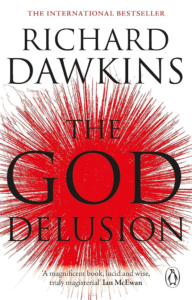Don Quixote’s Enduring Dance: A Symphony of Idealism, Reality, and the Human Condition

Miguel de Cervantes’ Don Quixote transcends mere categorization. Published in two parts (1605 and 1615), it’s a literary marvel that pirouettes between genres, weaving humor, social commentary, and philosophical inquiry into a timeless tapestry. At its heart lies the story of Alonso Quixano, a Spanish nobleman who succumbs to a peculiar madness. Consumed by chivalric romances, he transforms into Don Quixote, a knight-errant on a self-proclaimed quest to revive chivalry’s fading glory in a world that has cast it aside.
From Bookish Dreams to Delusional Deeds: The Allure and Peril of Chivalry
Don Quixote’s descent into madness is a slow burn fueled by his relentless immersion in tales of valiant knights, damsels in distress, and mythical creatures. These fantastical narratives become his reality, blurring the lines between fiction and the everyday world. Windmills morph into fearsome giants, sheep transform into an enemy army, and a peasant woman, Dulcinea del Toboso, is elevated to the status of his unattainable ladylove. Don Quixote, driven by this warped perception, believes himself chosen to revive chivalry and restore its lost honor.
Sancho Panza: A Counterpoint of Pragmatism and a Steadfast Companion
Don Quixote’s journey is not a solitary one. Sancho Panza, a simple peasant with a head full of practicality, serves as his loyal squire. Initially drawn by the promise of wealth and adventure, Sancho soon finds himself exasperated by his master’s misinterpretations of the world. Don Quixote charges at windmills, attempts to “free” galley slaves who have no desire for freedom, and delivers grand pronouncements of chivalry that fall on deaf ears. Despite the frustration, a bond blossoms between them. Sancho’s grounded nature acts as a counterpoint to Don Quixote’s idealism, creating a dynamic that fuels the novel’s humor and pathos.
Cervantes’ Masterful Satire: Laughter with a Bite
Cervantes’ genius lies not only in weaving a whimsical narrative but also in his masterful use of satire. Don Quixote’s misadventures are an endless source of amusement. His valiant charges, his misplaced chivalry, and his pronouncements in a world that deems them obsolete, all contribute to the novel’s comic brilliance. However, beneath the laughter lies a subtle, yet potent, critique of Spanish society. Cervantes satirizes the rigid social hierarchy, the hypocrisy of religious institutions, and the blind adherence to outdated codes of conduct.
Beyond Sanity and Madness: The Power of Imagination
One of the most captivating aspects of Don Quixote is its exploration of the nebulous area between sanity and madness. The line between the two is constantly shifting. While Don Quixote’s delusions are undeniable, his unwavering idealism, his unyielding sense of justice, and his unwavering courage are portrayed with a complexity that evokes not only amusement but also respect and even admiration. The novel invites us to contemplate the role of imagination in shaping our perception of reality. It asks us to consider the potential for beauty and nobility to exist even within the confines of a deluded mind.
A Legacy Beyond Knight-Errantry: A Timeless Exploration of Humanity
Don Quixote is more than just a comical tale of a delusional knight. It’s a rich tapestry woven with timeless themes: the tension between idealism and pragmatism, the power of storytelling to shape our world view, the fleeting nature of fame and glory, and the importance of holding onto a sense of wonder in the face of harsh reality. It’s a testament to the human spirit’s capacity for both foolishness and nobility. Cervantes’ masterpiece continues to resonate with readers centuries after its creation, a testament to its enduring exploration of the human condition.




















